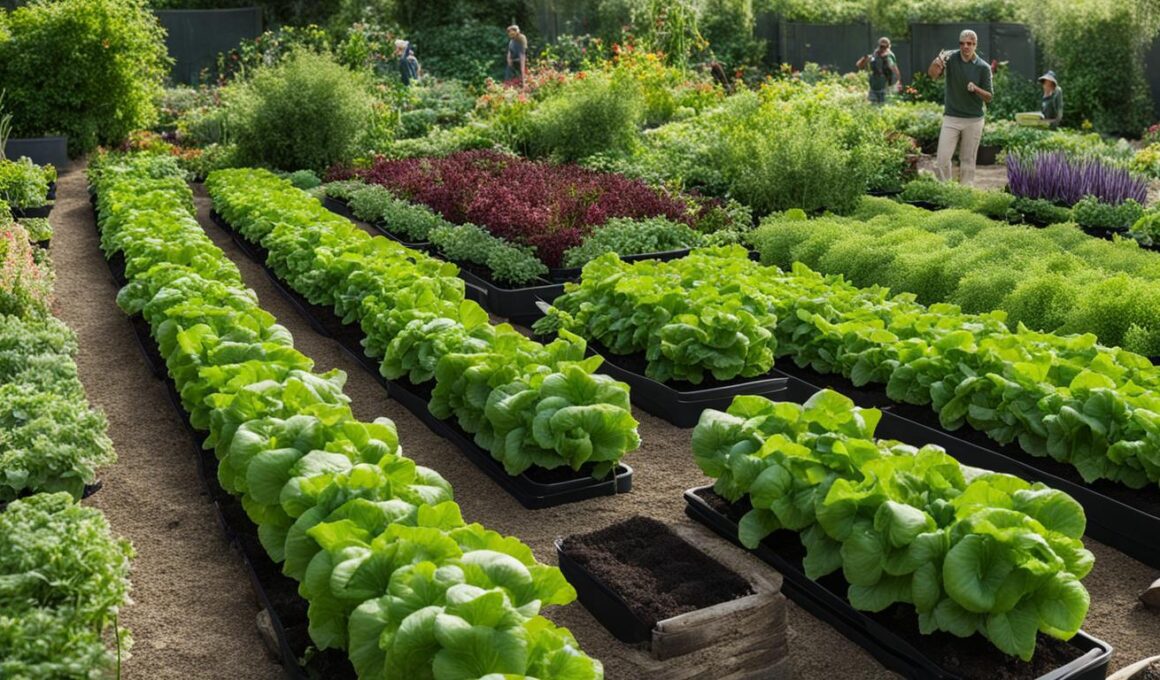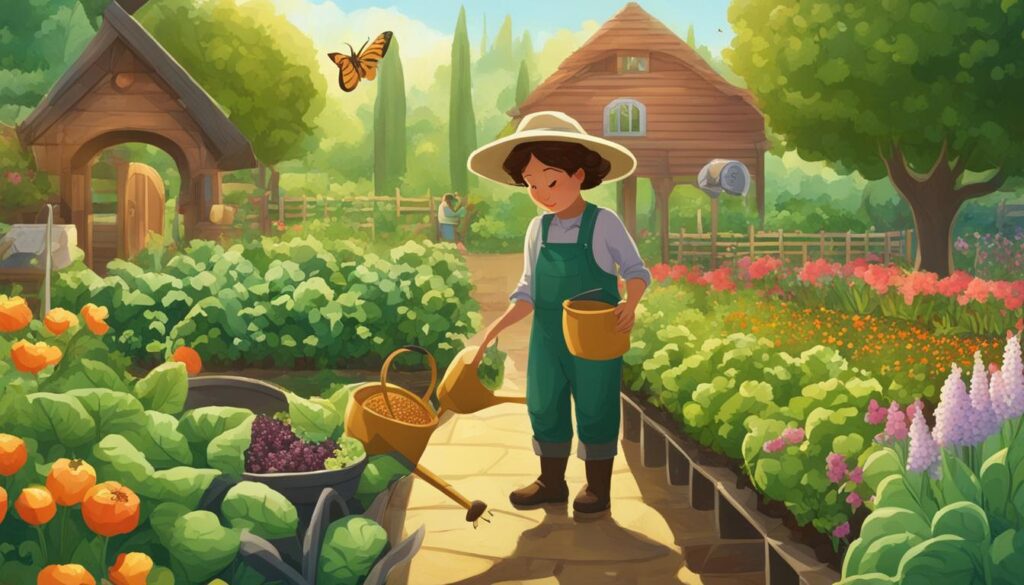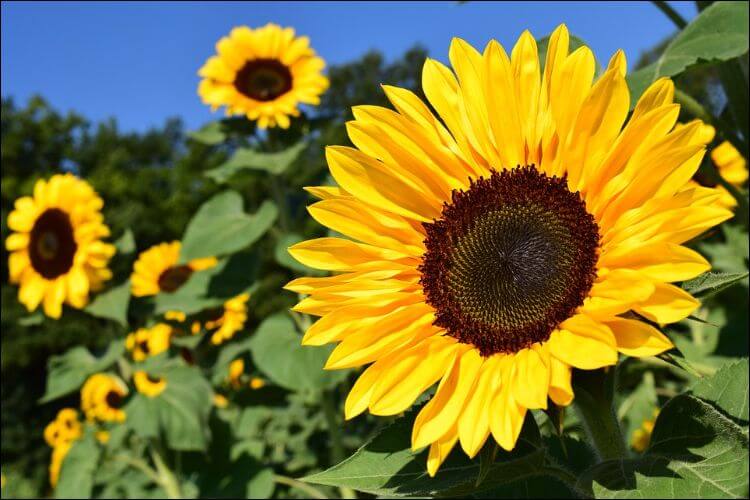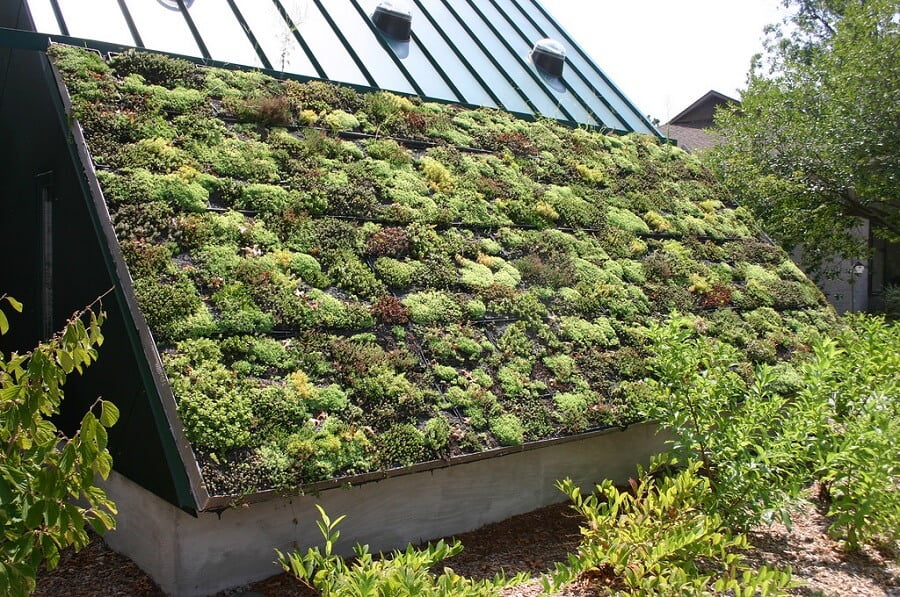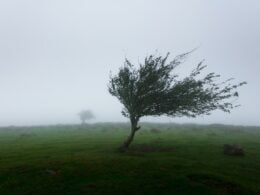Organic gardening is all about finding natural alternatives to chemical pesticides. One such option is Bacillus thuringiensis (Bt), a naturally occurring bacteria that serves as a pesticide in organic gardening. But is Bt safe to use in your garden? Let’s delve into the details to find out.
Post Summary
- Bt, or Bacillus thuringiensis, is a natural pesticide used in organic gardening.
- It is considered safe for people, pets, and beneficial insects.
- Bt works by targeting specific pests and causing damage to their digestive system.
- There are different strains of Bt that target specific pests, making it highly targeted and effective.
- When used properly and according to the instructions, Bt can be a safe and effective option for organic pest control.
What is Bacillus Thuringiensis (Bt)?
Bacillus thuringiensis, also known as Bt, is a gram-positive bacterium that produces parasporal crystal proteins with insecticidal activity. These proteins, known as cry toxins, are toxic to certain insects when ingested. Bt works by blocking the insect’s digestive system, causing starvation and eventual death. Different strains of Bt target specific insect pests, making it a highly targeted and effective pesticide. Bt is commonly used in organic gardening as a natural alternative to chemical pesticides.
One of the key advantages of Bt is its ability to selectively target pests without harming beneficial insects like bees and butterflies. This makes it an ideal choice for organic gardening, where minimizing environmental impact is a priority. Additionally, Bt is considered safe for humans and pets, as it is non-toxic to mammals and birds. It is also biodegradable and breaks down quickly in sunlight and acidic soil, leaving no long-term residue.
When using Bt in organic gardening, it is important to follow the instructions on the product label for proper application. Bt is available in different forms such as sprays, granules, or dunks, and the method of application may vary. It is best to apply Bt when the pests are actively feeding and target the specific area affected. Regular applications may be necessary, as Bt breaks down quickly in sunlight. Storage is also important to maintain the effectiveness of Bt, as it should be kept in a cool, dark place.
What is Bacillus Thuringiensis (Bt)?
Types of Bacillus Thuringiensis (Bt) and Their Uses
Bacillus thuringiensis (Bt) comes in different strains, each with its own specific uses in pest control. Understanding the different strains of Bt can help you choose the right one for your organic gardening needs.
Bacillus thuringiensis var. israelensis (BTi)
BTi is commonly used to control mosquitoes, black flies, and fungus gnats. It is effective in targeting the larvae of these pests and can be applied as sprays, granules, or dunks. BTi is particularly useful in areas with stagnant water or high mosquito populations.
Bacillus thuringiensis var. kurstaki (BTk)
BTk is known for its effectiveness against caterpillars. It is commonly used to control pests like gypsy moths, tomato hornworms, and cabbage worms. BTk can be applied as sprays or granules, targeting the caterpillar larvae during their feeding period.
Bacillus thuringiensis var. aizawl (BTa)
BTa is used to control specific pests such as the grape berry moth and the wax moth. It targets the larval stage of these insects and can be applied as sprays or granules. BTa is particularly beneficial in vineyards and areas where these pests are prevalent.
| Bt Strain | Target Pests | Application Method |
|---|---|---|
| Bacillus thuringiensis var. israelensis (BTi) | Mosquitoes, black flies, fungus gnats | Sprays, granules, dunks |
| Bacillus thuringiensis var. kurstaki (BTk) | Caterpillars | Sprays, granules |
| Bacillus thuringiensis var. aizawl (BTa) | Grape berry moth, wax moth | Sprays, granules |
Each strain of Bt has its own unique target pests and application methods. By selecting the appropriate strain, you can effectively control specific pests in your organic garden.
How Does Bt Work in Organic Gardening?
Bacillus thuringiensis (Bt) is a highly effective insecticide used in organic gardening to control pests. When applied to plants, Bt produces protein toxins that are toxic to specific insects when ingested. These toxins target the digestive system of the pests, causing damage that leads to starvation and eventual death.
Bt is a stomach toxin, meaning it needs to be consumed by the pests to be effective. It is important to apply Bt when the pests are actively feeding to ensure they ingest the toxin. Bt is considered a fast-acting insecticide, with the pests usually dying within a few days of ingestion.
How Bt Interacts with Pests
When pests come into contact with Bt, they consume the toxin along with their plant-based food source. Once ingested, the protein toxins bind to specific receptors in the pests’ digestive systems, disrupting their ability to feed properly. This interference leads to starvation and ultimately the demise of the pests.
Bt is highly selective in its target pests, minimizing harm to beneficial insects and other organisms. It only affects insects within the targeted pest group, ensuring that non-target insects are unharmed. This targeted approach makes Bt an ideal choice for organic gardeners who want to control pests while preserving the overall ecosystem of their gardens.
| Insect Pest | Bt Strain |
|---|---|
| Caterpillars | Bacillus thuringiensis var. kurstaki (BTk) |
| Mosquitoes, Black Flies, Fungus Gnats | Bacillus thuringiensis var. israelensis (BTi) |
| Grape Berry Moth, Wax Moth | Bacillus thuringiensis var. aizawl (BTa) |
Table: Bt Strains and their Target Insect Pests
It is important to note that Bt does not kill eggs or adult insects, as it primarily targets the pests during their feeding stages. For optimal results, regular applications of Bt may be necessary, especially when the pest population is high. Additionally, it is recommended to store Bt in a cool, dark place to maintain its effectiveness over time.
In summary, Bt is a powerful and safe insecticide for organic gardening. By selectively targeting specific pests and causing damage to their digestive systems, Bt effectively controls pests without harming beneficial insects or leaving harmful residues in the environment. When used properly and in conjunction with other organic gardening practices, Bt can help maintain a healthy and pest-free garden.
Is Bt Safe for Humans and the Environment?
Bacillus thuringiensis (Bt) is not only safe for organic gardening but also for humans and the environment. When used as directed, Bt does not pose a direct harm to people or pets. It is considered safe for mammals, birds, and most beneficial insects. This makes Bt an ideal choice for organic gardeners who care about the well-being of their plants, as well as the surrounding ecosystem.
Bt is a biodegradable pesticide, meaning it breaks down quickly in sunlight and acidic soil. This ensures that there is no long-term residue left behind, minimizing any potential negative impact on the environment. Additionally, Bt does not pollute groundwater or soil, making it an environmentally friendly option for pest control.
While Bt is generally safe, there are a few considerations to keep in mind. It is important to avoid direct contact with bees when using Bt, as it can be harmful to them. If you have a butterfly garden, it’s best to avoid spraying Bt in those areas to protect the delicate butterflies. By taking these precautions and using Bt responsibly, you can safely and effectively control pests in your organic garden.
“Bt is considered a safe and effective option for organic gardening.”
| Pros | Cons |
|---|---|
|
|
Tips for Using Bt in Organic Gardening
When incorporating Bt into your organic gardening practices, there are several tips to keep in mind to ensure optimal results. By following these guidelines, you can effectively control pests and maintain a healthy garden without relying on chemical pesticides.
1. Read and Follow Instructions
Before using Bt, carefully read and follow the instructions provided on the product label. Different forms of Bt, such as sprays, granules, and dunks, may have varying application methods. Adhering to the recommended dosage and application frequency is essential for success. By understanding the instructions, you can maximize the effectiveness of Bt in your pest control efforts.
2. Apply at the Right Time
Bt is most effective when pests are actively feeding. Therefore, it is crucial to time your applications accordingly. Monitor your garden for signs of pest activity, such as chewed leaves or visible insects, and apply Bt when these pests are present. This targeted approach ensures that the pests will consume the Bt and be affected by its insecticidal properties.
3. Store Properly
To maintain the effectiveness of Bt, it is important to store it correctly. Keep the product in a cool, dark place, as exposure to high temperatures or sunlight can degrade its potency. By storing Bt properly, you can ensure that it remains viable for future use in your organic garden.
| Tips for Using Bt in Organic Gardening |
|---|
| Read and Follow Instructions |
| Apply at the Right Time |
| Store Properly |
By implementing these tips, you can successfully incorporate Bt into your organic gardening practices. Remember to always follow the instructions provided with the product, apply Bt when pests are actively feeding, and store it properly to maintain its efficacy. With these considerations in mind, you can effectively utilize Bt for pest control in your organic garden.
“The key to successful pest control in organic gardening is to read and follow the instructions provided.”
Considerations for Using Bt in Organic Gardening
When using Bt in organic gardening, there are several important considerations to keep in mind. These precautions will help you maximize the effectiveness of Bt while minimizing any potential negative impacts on the environment and beneficial insects.
- Use Bt only when necessary: It is essential to use Bt only when you have identified a pest problem that requires intervention. Overusing Bt can lead to the development of resistance in pest populations, making it less effective over time. Assess the severity of the pest issue and consider alternative pest control methods before resorting to Bt.
- Follow the product label instructions: Each Bt product has specific instructions for application, including recommended timing and frequency. It is crucial to read and follow these instructions carefully to ensure proper usage and maximum effectiveness. Avoid deviating from the recommended application rates and methods.
- Minimize impact on beneficial insects: While Bt is safe for most beneficial insects, it is important to be aware of any potential harm it may cause to specific species, such as bees and butterflies. Take precautions to minimize their exposure to Bt by avoiding direct contact and spraying in areas where they are active, such as butterfly gardens.
By adhering to these considerations, you can use Bt in a responsible and effective manner in your organic gardening practices. Remember that Bt should be used as part of an integrated pest management approach, incorporating other preventive techniques and strategies to maintain a healthy and balanced ecosystem in your garden.
| Considerations for Using Bt | Actions to Take |
|---|---|
| Use Bt only when necessary | Assess the severity of the pest problem and consider alternative pest control methods |
| Follow the product label instructions | Read and adhere to the recommended application rates, timing, and frequency |
| Minimize impact on beneficial insects | Avoid direct contact with bees and butterflies, and avoid spraying in areas where they are active |
The Benefits and Limitations of Using Bt in Organic Gardening
Using Bacillus thuringiensis (Bt) in organic gardening offers several benefits. Firstly, it serves as a natural and safe alternative to chemical pesticides, making it suitable for organic practices. Its selective targeting of pests ensures that beneficial insects, such as bees and butterflies, remain unharmed. Additionally, Bt is known for its biodegradable properties, breaking down quickly in sunlight and acidic soil. This means that it leaves no long-term residue, minimizing its impact on the environment.
However, it is important to note the limitations of using Bt in organic gardening. While Bt is effective against specific pests, it may not be the optimal solution for all pest problems. Its targeted approach means that it may require regular applications for maximum effectiveness. Additionally, Bt is not effective against pests like aphids or mites. It is essential to assess the specific pest situation and consider other pest control methods when necessary.
| Benefits of Using Bt in Organic Gardening | Limitations of Using Bt in Organic Gardening |
|---|---|
|
|
When using Bt in organic gardening, it is crucial to consider both its benefits and limitations. By understanding its targeted approach and specific uses, you can effectively integrate Bt into your pest control strategies. Remember to always follow the instructions on the product label and assess the specific needs of your garden to ensure the success of your organic pest control methods.
Conclusion
In conclusion, Bt is a powerful tool for organic gardening, providing safe and effective pest control. Its ability to target specific pests while leaving beneficial insects unharmed makes it a valuable asset in maintaining a healthy garden ecosystem.
By following the instructions on the product label and applying Bt when pests are actively feeding, you can maximize its effectiveness. Regular applications may be necessary, as Bt breaks down quickly in sunlight, but its biodegradable nature ensures that it does not leave harmful residues in the soil or water.
While Bt is a great option for pest control, it is important to consider the specific pest situation in your garden. Bt may not be effective against all pests, and using it in conjunction with other pest control methods can provide comprehensive protection.
In summary, Bt is a valuable tool in organic gardening, offering a safe and environmentally friendly alternative to chemical pesticides. With its targeted approach and proper application, Bt can help you maintain a thriving and pest-free organic garden.
Can Miracle Gro Alternatives like Organic Garden Fertilizers Still be Considered Safe for Organic Gardening?
Many gardeners wonder if effective garden fertilizers organic options are safe for organic gardening. Luckily, there are several Miracle Gro alternatives like organic garden fertilizers that are certified safe for organic gardening. These natural options provide essential nutrients for plants without harmful chemicals, making them a great choice for eco-friendly gardeners.
FAQ
Is Bt safe to use in organic gardening?
Yes, Bt is considered safe to use in organic gardening. It does not harm mammals, birds, or humans when used as directed.
What is Bacillus thuringiensis (Bt)?
Bacillus thuringiensis, commonly known as Bt, is a naturally occurring bacteria used as a pesticide in organic gardening.
What are the different strains of Bt and their uses?
There are different strains of Bt that target specific pests. BTi controls mosquitoes, black flies, and fungus gnats, BTk is effective against caterpillars, and BTa controls pests like the grape berry moth and wax moth.
How does Bt work in organic gardening?
Bt produces protein toxins that block the insect’s digestive system, causing starvation and death. It is ingested by the pests and targets specific insect pests.
Is Bt safe for humans and the environment?
Yes, Bt is safe for humans and the environment. It does not directly harm people and breaks down quickly without leaving long-term residue.
What are some tips for using Bt in organic gardening?
When using Bt, it is important to read and follow the instructions on the product label. Apply it when pests are actively feeding and store it in a cool, dark place to maintain effectiveness.
What are the considerations for using Bt in organic gardening?
It is important to avoid direct contact with bees and spraying in butterfly gardens when using Bt. Overuse can also lead to resistance in pest populations.
What are the benefits and limitations of using Bt in organic gardening?
Using Bt in organic gardening offers benefits such as being a natural and safe alternative to chemical pesticides. However, it may not be effective against all pests and may require regular applications.
Conclusion
Bt is a safe and effective option for organic gardening when used properly. It targets specific pests while leaving beneficial insects unharmed, making it a valuable tool for pest control in organic gardens.





